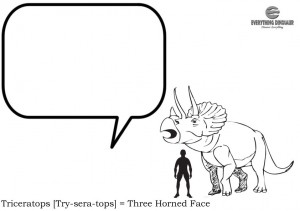A Creative Approach to Literacy and Numeracy Using Dinosaurs
Teachers can often find it quite challenging to settle children down in a reception class after spending time in nursery and yet it is important to help children make the transition towards more cognitive and structured learning. Children move into reception from nursery schooling from around the age of four and nursery schools within the country operate a curriculum based around what is termed the Early Years Foundation Stage (EYFS). This statutory framework sets out the standards that young children are to reach and provides the guidelines to help teaching professionals ensure that children learn and develop in healthy, stimulating and safe environments.
Dinosaurs
At the heart of the Early Years Foundation Stage is the need to develop the broad range of personal and group skills a young child will need as they grow up and enter more formal education. This framework helps to provide an appropriate foundation for the child’s academic career. It has been subject to a number of revisions, the three key areas of a child’s communication and language development in conjunction with their physical well-being and their personal, social and emotional development have become even more central to the core aims of this Government initiative and this, surprisingly is where dinosaurs can help.
Children from around 36 months can begin to gain an appreciation of dinosaurs and prehistoric animals. It is surprising what they can pick up from the many television documentaries, films and books dedicated to dinosaurs that these children are exposed to. Many young children can obsess on dinosaurs and it is surprising how quickly they can learn the long, often complicated names of dinosaurs such as Tyrannnosaurus rex and Triceratops.
An Affinity for All Things Dinosauria
If children have a natural affinity for all things Dinosauria, then this fascination can be used to help them develop improved literacy and numeracy skills. For example, when helping children to form sentences and the meaning of words, a picture of a dinosaur with a speech bubble can help the child to consider what the dinosaur might be thinking or even saying. The child can be encouraged to explore feelings and emotions using the dinosaur as an exemplar.
Using a Dinosaur to Help a Child Explore Emotions
Illustration credit: Everything Dinosaur
The same dinosaur picture can help a nursery school child with their numeracy skills. Counting games can be devised such as counting the number of legs the dinosaur might have or the horns on its head for instance. Dinosaur models make great counters for use in many numeracy based exercises, they are tactile and easy to handle and the games can be developed with the children encouraged to sort their dinosaurs into different groups based on simple criteria such as sorting by size, by colour and by which ones might be meat-eaters and which ones the herbivores.
An early fascination with dinosaurs and prehistoric animals can help a creative teacher to devise imaginative learning games thus helping their young charges to learn whilst having fun in a supportive environment.
Take a look at the educational, dinosaur themed items available from Everything Dinosaur: Models of Fossils and Dinosaur Themed Toys and Games.



Leave A Comment